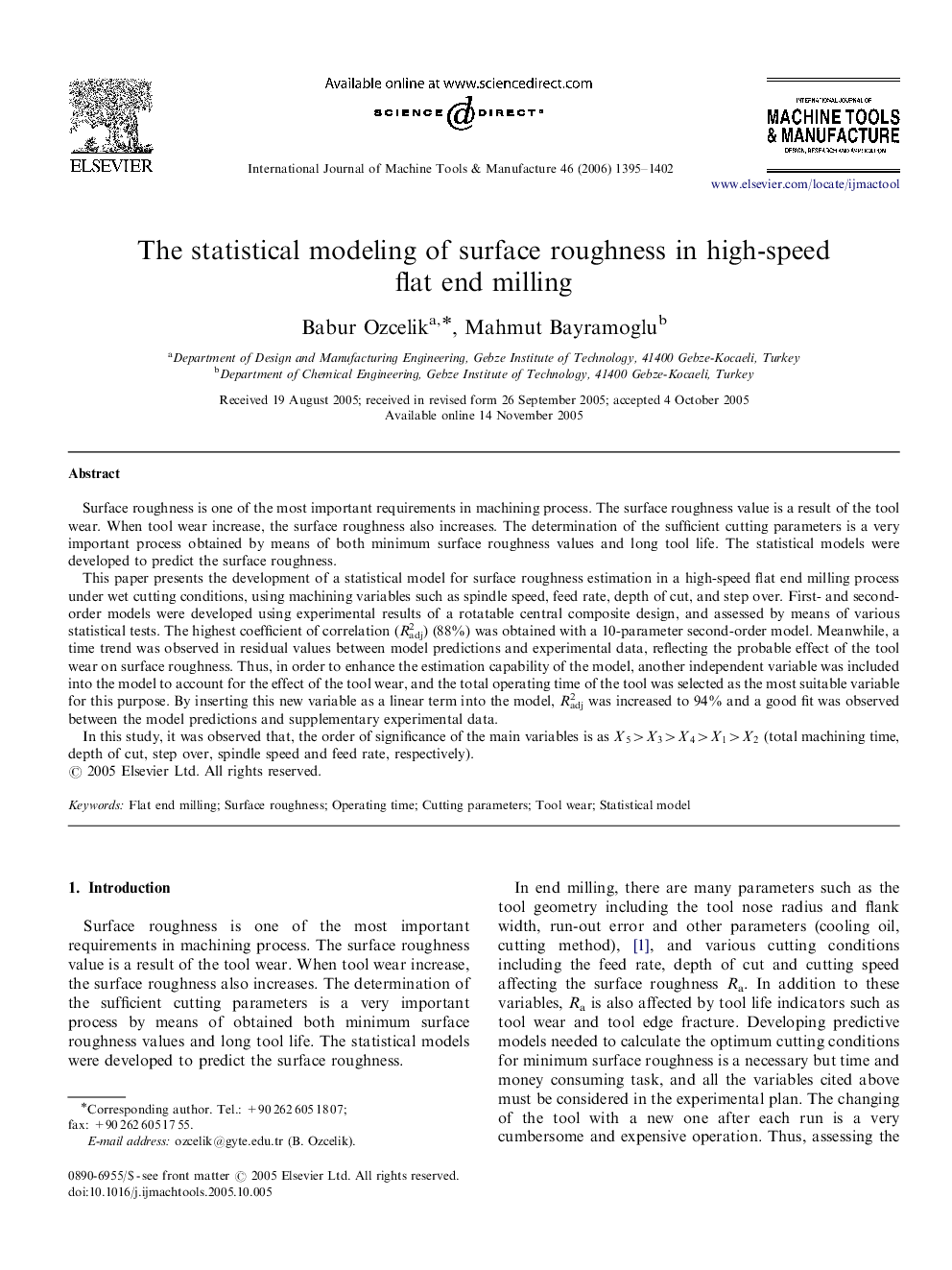| کد مقاله | کد نشریه | سال انتشار | مقاله انگلیسی | نسخه تمام متن |
|---|---|---|---|---|
| 784727 | 1464599 | 2006 | 8 صفحه PDF | دانلود رایگان |

Surface roughness is one of the most important requirements in machining process. The surface roughness value is a result of the tool wear. When tool wear increase, the surface roughness also increases. The determination of the sufficient cutting parameters is a very important process obtained by means of both minimum surface roughness values and long tool life. The statistical models were developed to predict the surface roughness.This paper presents the development of a statistical model for surface roughness estimation in a high-speed flat end milling process under wet cutting conditions, using machining variables such as spindle speed, feed rate, depth of cut, and step over. First- and second-order models were developed using experimental results of a rotatable central composite design, and assessed by means of various statistical tests. The highest coefficient of correlation (Radj2) (88%) was obtained with a 10-parameter second-order model. Meanwhile, a time trend was observed in residual values between model predictions and experimental data, reflecting the probable effect of the tool wear on surface roughness. Thus, in order to enhance the estimation capability of the model, another independent variable was included into the model to account for the effect of the tool wear, and the total operating time of the tool was selected as the most suitable variable for this purpose. By inserting this new variable as a linear term into the model, Radj2 was increased to 94% and a good fit was observed between the model predictions and supplementary experimental data.In this study, it was observed that, the order of significance of the main variables is as X5>X3>X4>X1>X2X5>X3>X4>X1>X2 (total machining time, depth of cut, step over, spindle speed and feed rate, respectively).
Journal: International Journal of Machine Tools and Manufacture - Volume 46, Issues 12–13, October 2006, Pages 1395–1402